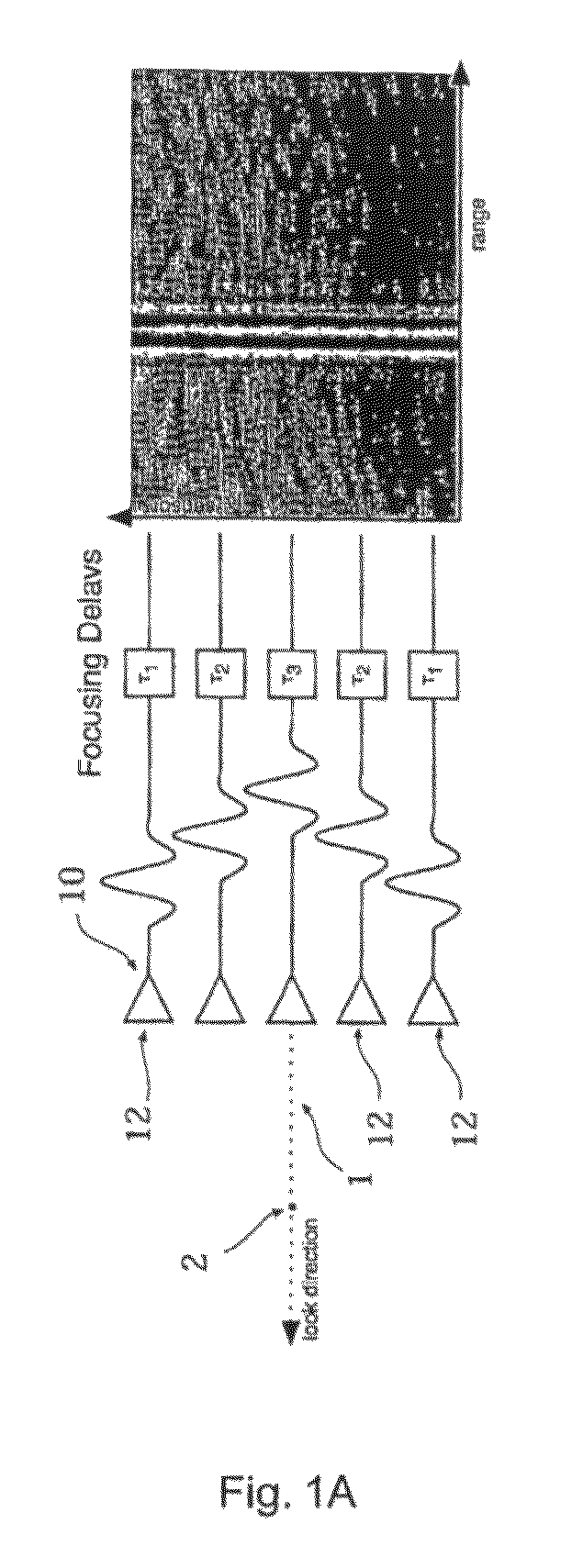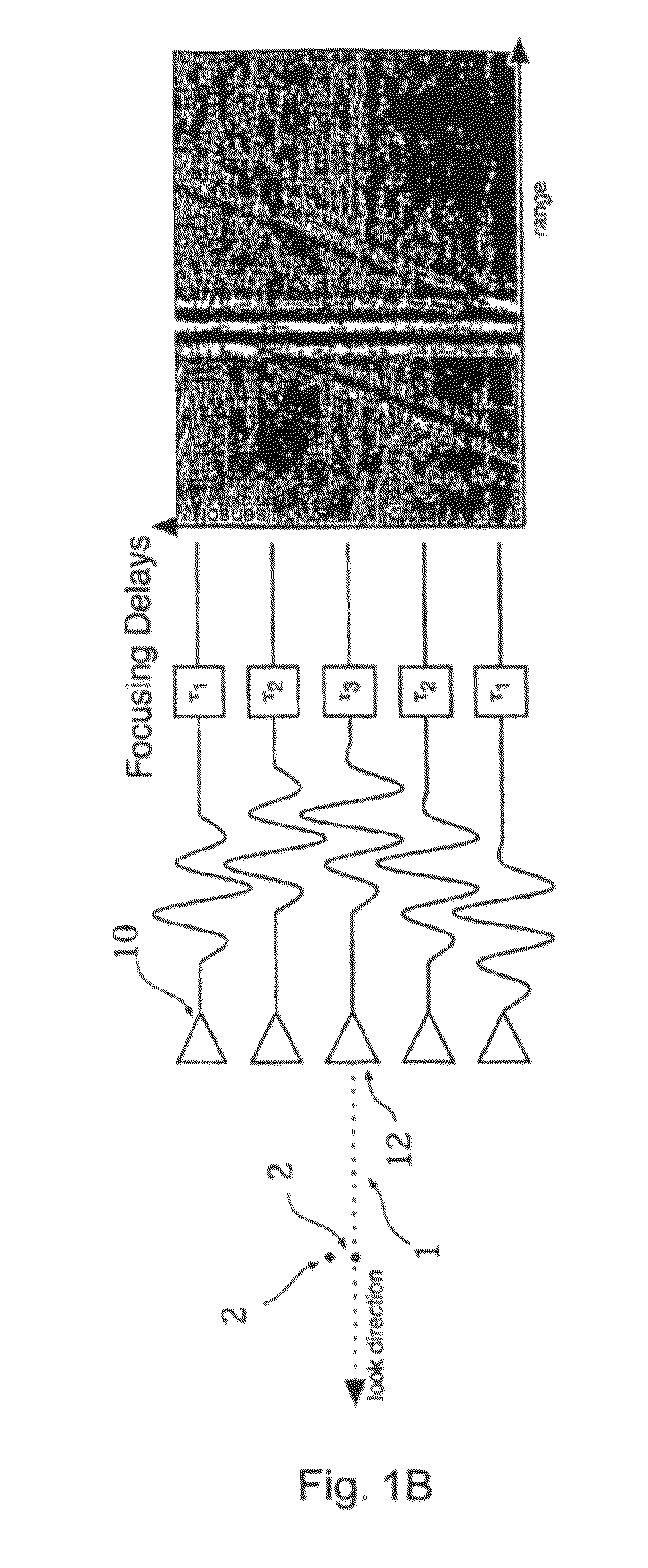Systems and method for adaptive beamforming for image reconstruction and/or target/source localization
a beamformer and image technology, applied in the field of imaging devices and techniques, can solve the problems of reducing the overall quality of the beamformer output, reducing image contrast and resolution, and difficult computation of reliable covariance matrixes
- Summary
- Abstract
- Description
- Claims
- Application Information
AI Technical Summary
Benefits of technology
Problems solved by technology
Method used
Image
Examples
example 1
Beamplots
[0164]A series of adaptive algorithms (Frost, Duvall, SSB, and an adaptive algorithm according to an embodiment of the present invention) were compared directly to the conventional delay-and-sum beamforming. Beamplots were generated for a 32 and a 64 element array. The array was operating at 5 MHz with roughly 70% fractional bandwidth. For calculation of the array manifold matrix 66, hypothetical sources were placed every 20 μm in range and every 100 μm in azimuth for the 32 elements array, shown in FIG. 7, and every 150 μm in azimuth for the 64 element case, shown in FIG. 8. In this and the following simulations, data was first demodulated to obtain IQ signals from which processing according to the present invention was performed.
example 2
Point Targets
[0165]A series of point targets were distributed within a 4×5 mm region in range and azimuth, respectively. A 33 element linear array operating at 5 MHz with element spacing of 150 μm was simulated. The final sampling frequency was set at 40 MHz. A plane wave was used on transmit for both the conventional beamforming and the processing according to the present invention. Conventional beamforming was applied on the received RF data using Hann apodization and dynamic receive focusing. Apodization is a signal processing technique used in medical ultrasound to generate images with lower side-lobe level at the price of coarser main-lobe resolution. For the processing according to an embodiment of the present invention, the image region was discretized into a series of hypothetical targets separated 20 μm in range and 120 μm in azimuth. The positions of the hypothetical sources were chosen so that some, but not all coincided with the positions of the actual point targets. The...
example 3
Wire Targets
[0166]5 wires (20 μm in diameter) in a water bath. FIG. 10A shows the output of a Philips SONOS 5500 ultrasound imaging system. FIG. 10B shows the image of the five wires as reconstructed by the present invention. Hypothetical sources were placed every 20 microns axially (range) and every 67 microns laterally (azimuth).
PUM
 Login to View More
Login to View More Abstract
Description
Claims
Application Information
 Login to View More
Login to View More - R&D
- Intellectual Property
- Life Sciences
- Materials
- Tech Scout
- Unparalleled Data Quality
- Higher Quality Content
- 60% Fewer Hallucinations
Browse by: Latest US Patents, China's latest patents, Technical Efficacy Thesaurus, Application Domain, Technology Topic, Popular Technical Reports.
© 2025 PatSnap. All rights reserved.Legal|Privacy policy|Modern Slavery Act Transparency Statement|Sitemap|About US| Contact US: help@patsnap.com



